Did you know that converting fractions to decimals is an essential skill you use in everyday life?

Jenn, Founder Calcworkshop®, 15+ Years Experience (Licensed & Certified Teacher)
Sometimes it’s easier to use decimals, like when we are working with money, and other times it’s easier to use fractions, like when we are cooking.
The key takeaway is that decimals and fractions are different ways of representing a number that is not a whole.
Key Terms — Quick Review
A decimal denotes the “part” using place values to the right of the decimal point, and the whole is the value to the left. In a fraction, the numerator characterizes the part, and the denominator is the whole.
How To Turn A Fraction Into A Decimal
The key to transforming a fraction to a decimal involves long division as noted by Math Net. So, that means if we can divide we can turn fractions to decimals!
But first, let’s remind ourselves of the relationship between fractions and long division.
Now all we have to do is follow our rules for dividing decimals and whole numbers; thus, turning our fraction into a decimal.
Let’s look at a few examples to see how it’s done.
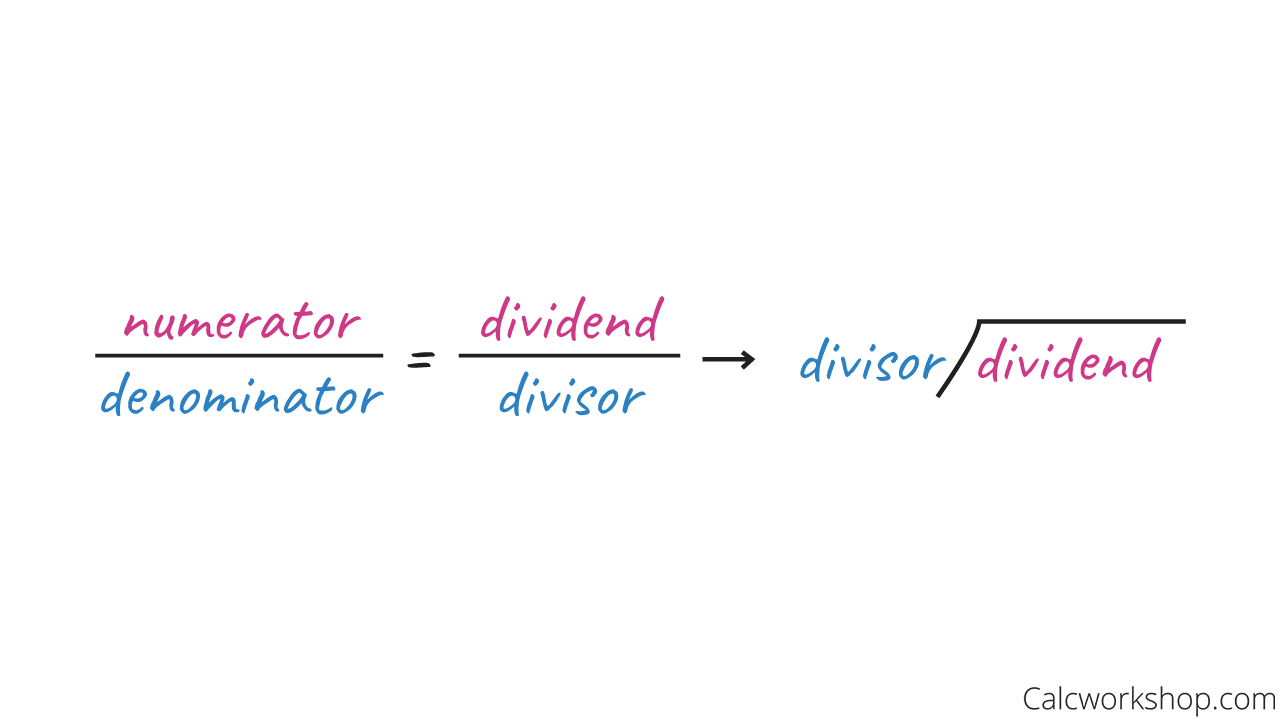
How to Write a Division Problem
Example #1 — 3/5 as a Decimal
Our goal is to transform three-fifth from fraction to decimal. All we have to do is perform decimal long division where the dividend is 3 and the divisor is 5.
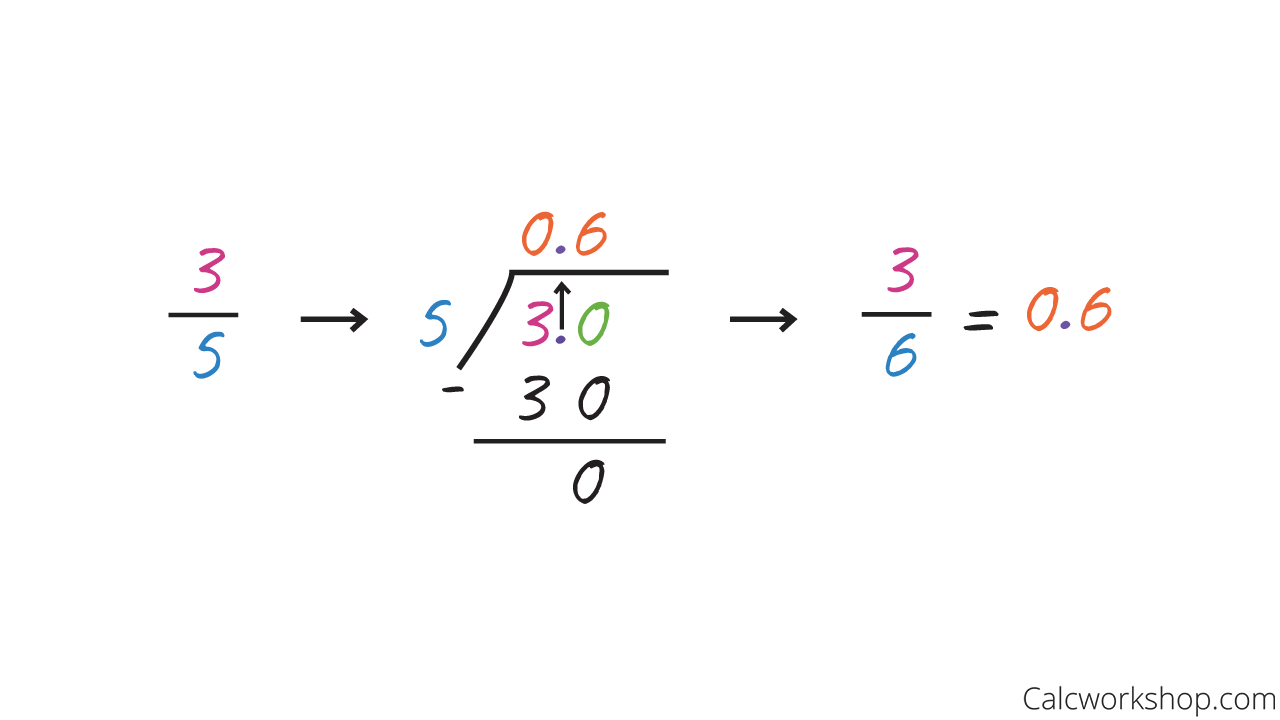
Converting a Fraction to a Terminating Decimal
Example #2 — 9/16 in Decimal Form
Similar to our previous example, our desire is to change nine-sixteenths into its decimal form using long division.
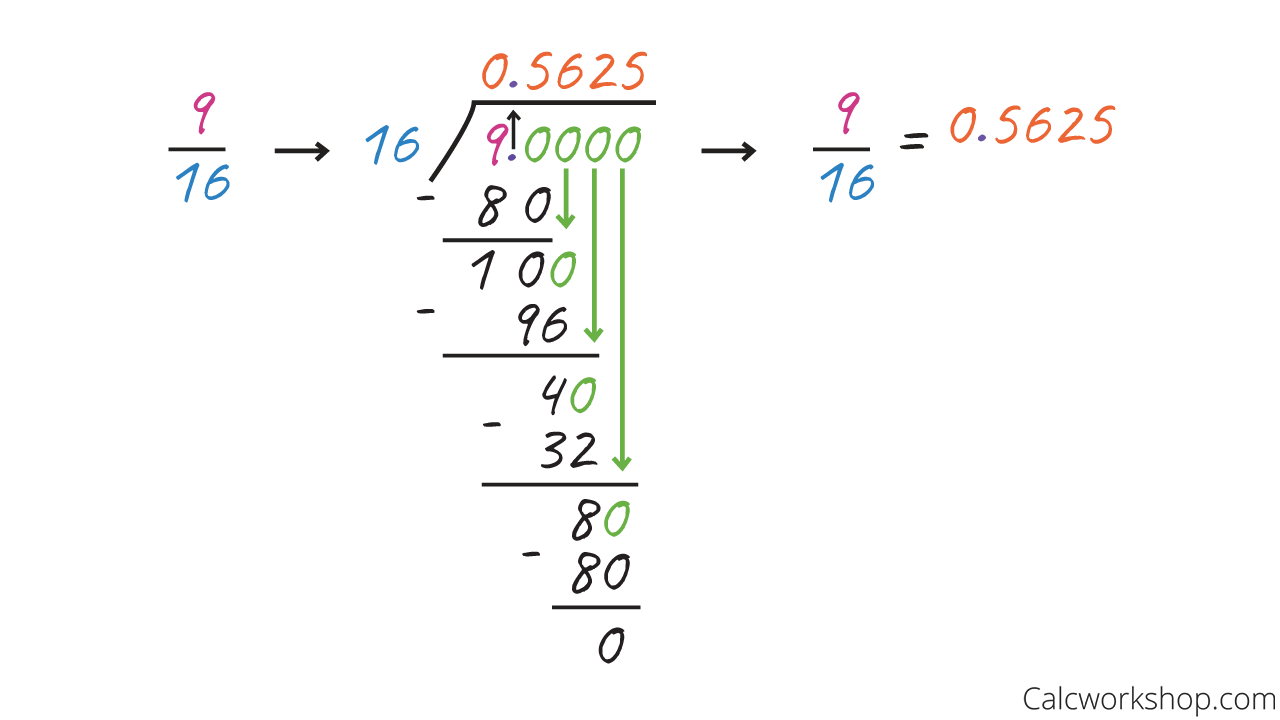
9/16 as a Decimal
Example #3 — Mixed Number To Decimal
Our next example demonstrates how to convert a mixed number into a decimal.
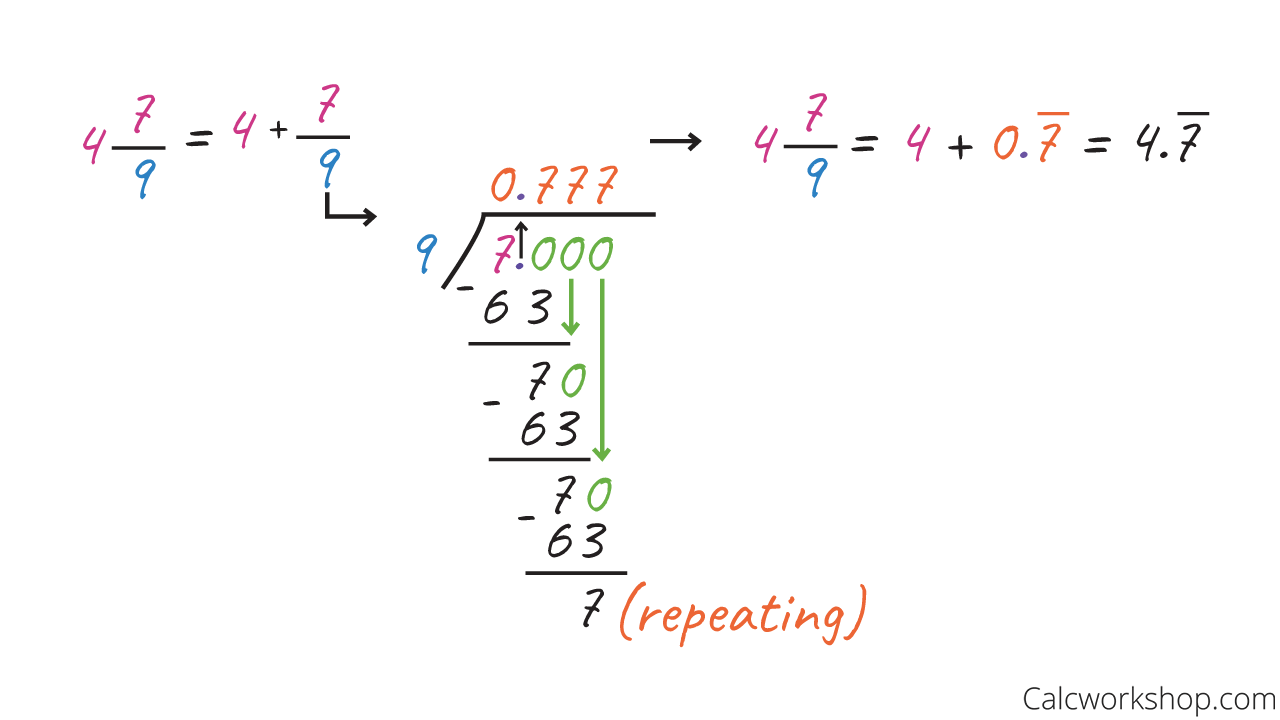
Writing a Mixed Number as a Repeating Decimal
Example #4 — Real Life
So, as long as we know how to divide using decimals, we can easily transform fractions to decimals!
But why would it be necessary to change a fraction in the real life?
There will be times when you will need to Add, Subtract, Multiply, or Divide – meaning we will have to switch all the fractions to decimals or vice versa before we can perform the operation.
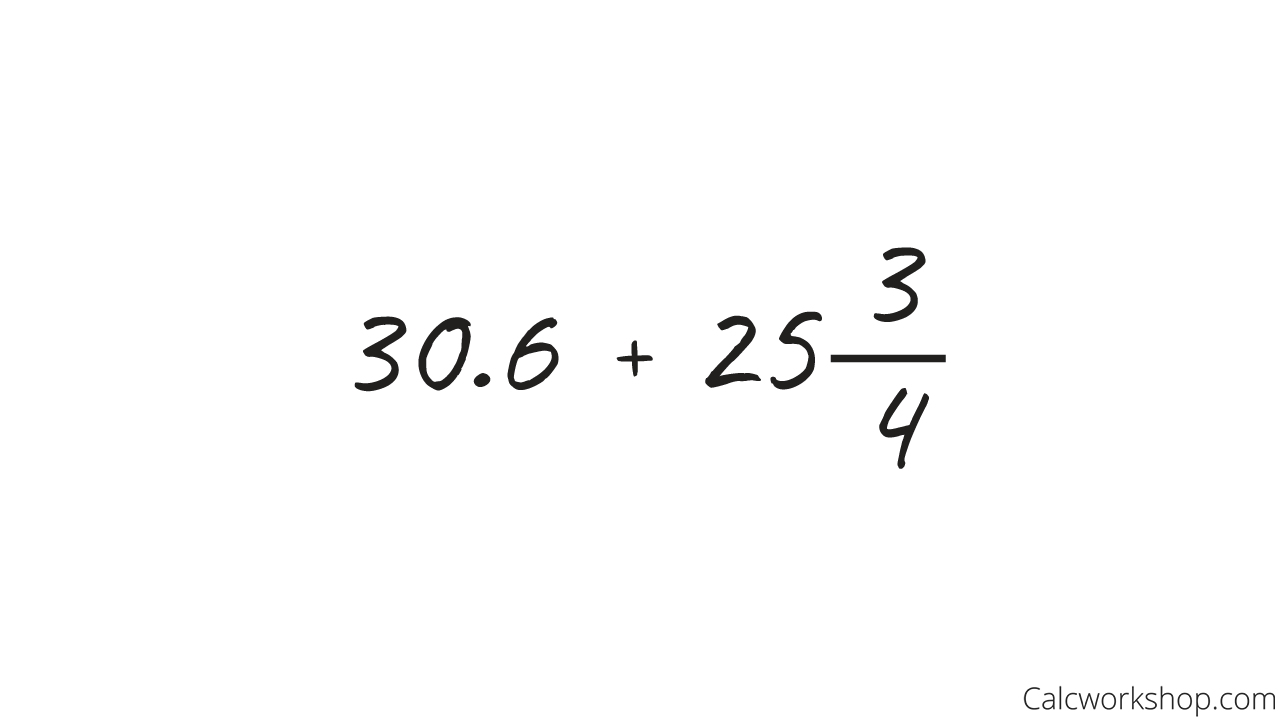
Adding a Mixed Number and a Decimal
But these values are not the same type, so we will have to first convert 25 and 3/4 into a decimal before we can add the two weights together.
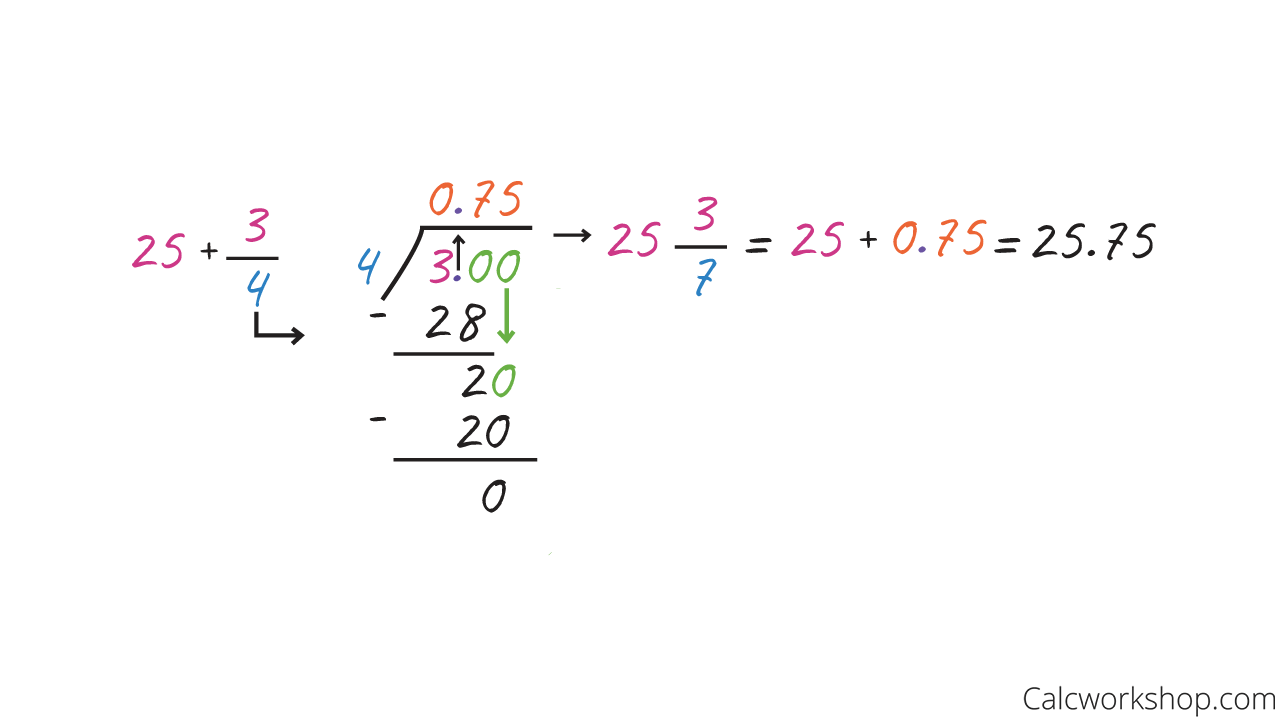
How to Convert Mixed Fraction to Decimal
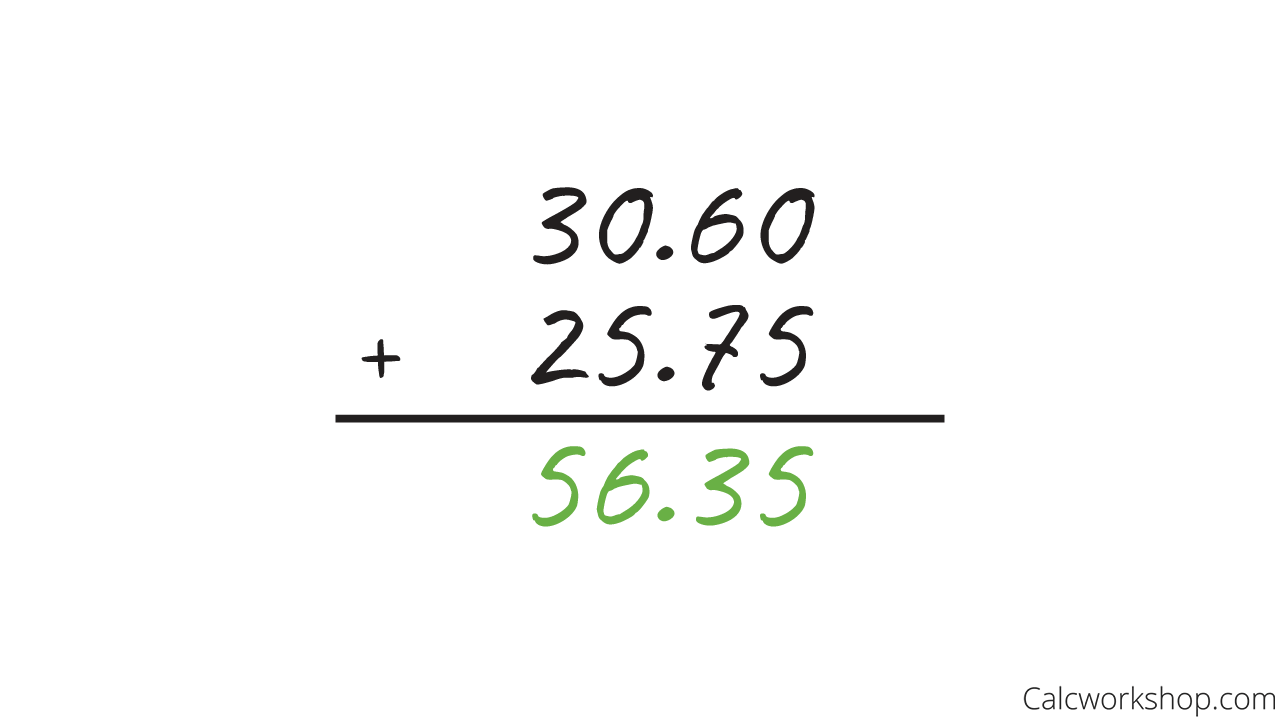
Adding Two Decimals
This means that the combined weight of Lucy’s dog and Edmond’s dog is 56.35 pounds.
Example #5 — Fraction Comparison
Sometimes we are asked to compare fractions with decimals or even list values in order from least to greatest.
But the problem is that we can’t compare two values unless they are the same type (i.e., all fractions or all decimals). So, in order to compare fractions and decimals we have to first convert every fraction to decimal form.
For example, which is greater 4/25 or 0.15?
We start by changing the fraction into a decimal.
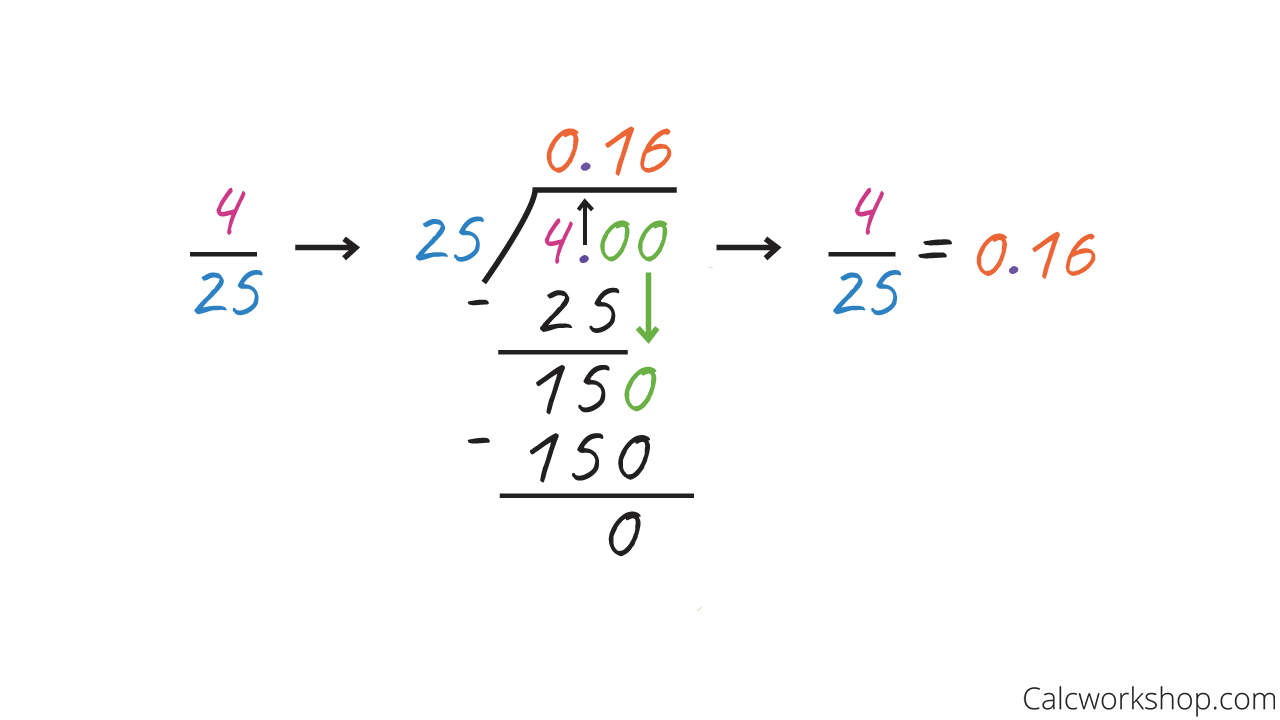
4 Divided By 25 — Conversion
So, 4/25 is greater than 0.15!
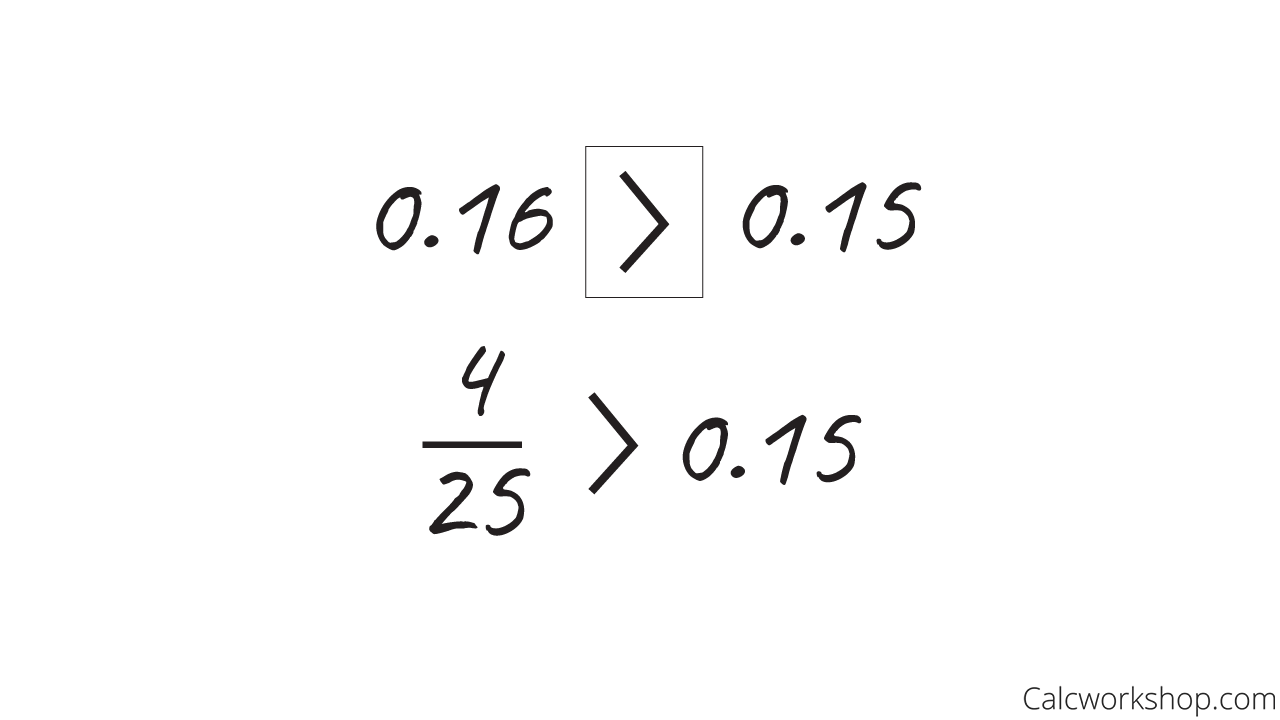
How to Compare Fractions and Decimals
See, knowing how to switch fractions to decimals does come in handy!
Worksheet (PDF) — Hands on Practice
Put that pencil to paper in these easy to follow worksheets — expand your knowledge!
Fraction to Decimal — Practice Problems
Fraction to Decimal — Step-by-Step Solutions
Summary
In the math lesson below, you’ll learn more as you experience harder problems and more exercises including:
- Addition
- Subtraction
- Multiplication
- Division
- And Comparisons of Fractions
So, let’s get to it!
Video Tutorial — Full Lesson w/ Detailed Examples
1 hr 10 min
- Introduction to Video
- 00:00:37 – How do we change fractions to decimals? (Examples #1-2)
- 00:08:02 – Write each number as a non-fraction (Examples #3-8)
- 00:29:09 – Why do we need to know how these operations?
- 00:30:22 – Approximate each fraction by rounding the indicated place value (Examples #9-10)
- 00:38:47 – Add by first changing the “number” into a decimal (Example #11)
- 00:41:08 – Perform the indicated operation (Examples #12-14)
- 00:51:57 – Write the correct comparison symbol (Examples #15-18)
- 01:00:46 – Order the “numbers” from least to greatest (Examples #19-20)
- Practice Problems with Step-by-Step Solutions
- Chapter Tests with Video Solutions
Get access to all the courses and over 450 HD videos with your subscription
Monthly and Yearly Plans Available
Still wondering if CalcWorkshop is right for you?
Take a Tour and find out how a membership can take the struggle out of learning math.